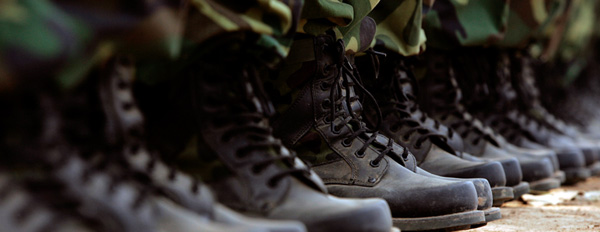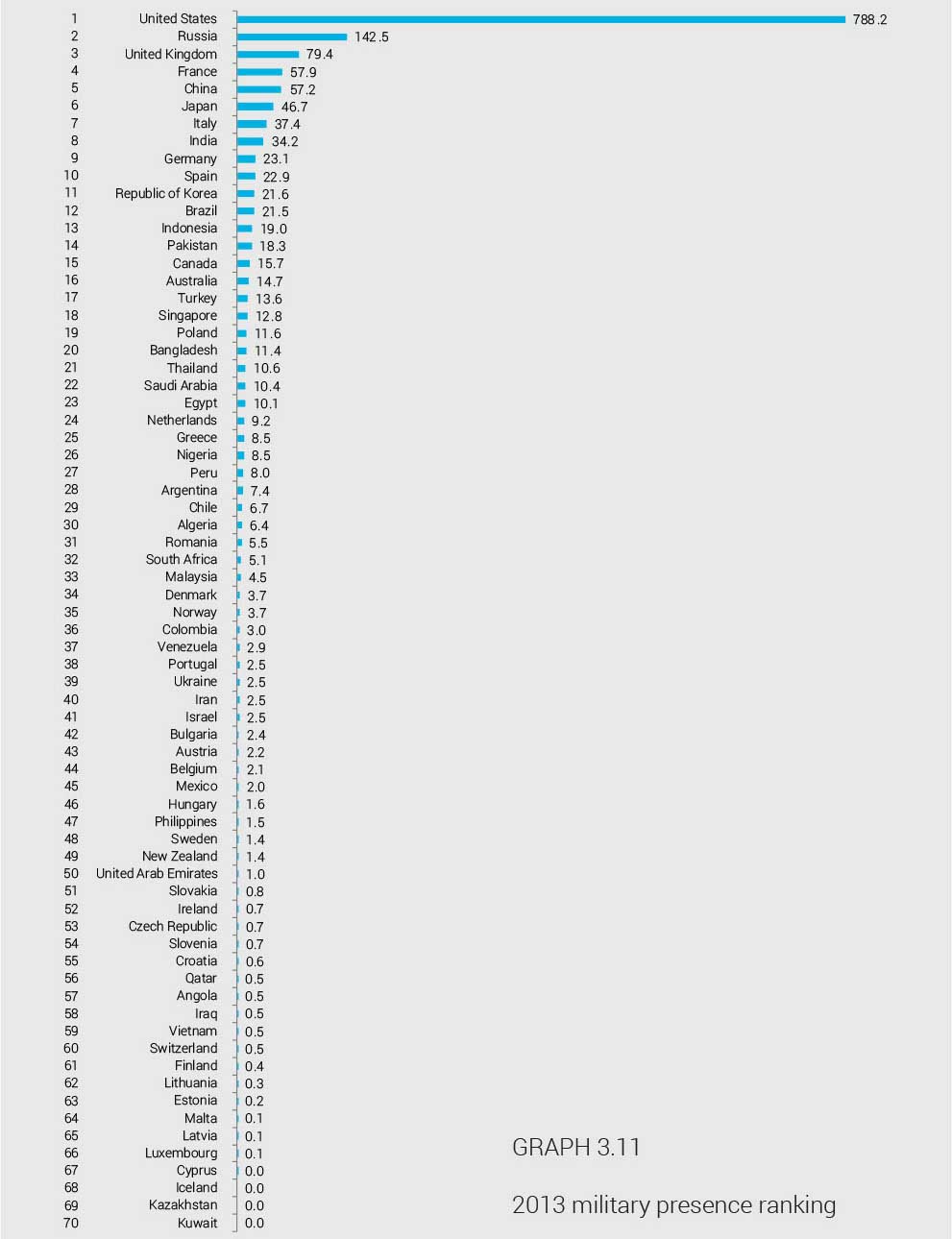
The Elcano Royal Institute has developed an Index (the Elcano Global Presence Index) to measure the global presence of key countries in the world. The index seeks to measure the ability of countries to project themselves beyond their borders. External presence is a prerequisite for countries to achieve influence (power) and the Elcano Index aggregates and quantifies the economic, military, scientific, social and cultural projection –or positioning– of a series of countries on the international stage. Among other indicators, economic presence is measured through the flow of exports or foreign direct investment, while soft power takes into account migration, tourism, the Internet and scientific indicators.
Military presence is measured on the basis of the number of troops deployed either in international missions or at bases overseas together with the military equipment that allows force to be projected. The troops deployed abroad reflect the political willingness of a country to be present in global security affairs. In this respect, the difference between power and presence is obvious when considering that large-scale military powers with huge armies such as China, India and Brazil do not deploy their armed forces outside their borders and neither do they regularly take part in international crisis management operations. In the same way, only countries that possess expeditionary force structures and the appropriate military equipment are able to project their armed forces.
In order to compare the force projection capabilities of different countries, the IISS Military Balance has identified several categories of military equipment specifically designed for projection: aircraft carriers, frigates, cruisers, destroyers, nuclear-powered submarines, principal amphibious ships, heavy and medium transport aircraft and tanker and multi-role transport aircraft. The Elcano Global Presence Index gathers and weighs the data for each of these categories from the IISS database into a single indicator to verify the relationship between global presence and force projection.
According to the Elcano Global Presence Index Report 2014 (Graph 3.11), the US is at the top of the list of countries with the greatest military presence, well ahead of Russia, the UK and France, while China, India and Japan are closing the gap with the leading countries, which reflects the changing trend in their traditional stance. Accordingly, the variation from 2012 to 2013 shows that countries such as China, Poland, Canada, the Republic of Korea, India, Singapore and Japan are increasing their troop deployment or force projection equipment while the US, Russia, France, the UK and Germany are reducing theirs.

The Elcano Global Presence Index methodology is always under review so that its measurement of external presence can be improved. In its military component, modern warfare and the latest trends in force projection pose an extraordinary challenge for future measurements. On the one hand, the spread of Anti-Access Area Denial (A2/AD) systems will make the presence of foreign troops in contested geographical areas or even in common spaces not subject to sovereignty (global commons) increasingly difficult. The foreseeable availability of ever more sophisticated systems to emerging armies and non-state violent actors will jeopardise the almost free access to any geographical location that most Western military forces currently enjoy. On the other one, modern military intervention abroad is designed to use limited forces on the ground in order to ensure light-footprint operations. Thus, the measurement of force projection in the future will have to resort to new categories of equipment designed for Intelligence, Surveillance, Target Acquisition and Reconnaissance (ISTAR), such as imagery and navigational satellites and airborne early-warning and control aircraft. New equipment, such as long-range unmanned aerial vehicles, special operations units and cyber capabilities, also reveal the willingness of countries to be present beyond their borders.
Consulting the Index and analysing its methodology and outcomes –an exercise I strongly recommend to defence analysts– suggests that force projection in its current form will come to an end, with a change in how expeditionary forces are deployed by traditional and emerging military powers –the former reducing their presence and the latter expanding theirs–, while the military presence of countries will move beyond concepts like globalisation, regionalisation, pivots and suchlike narratives.


